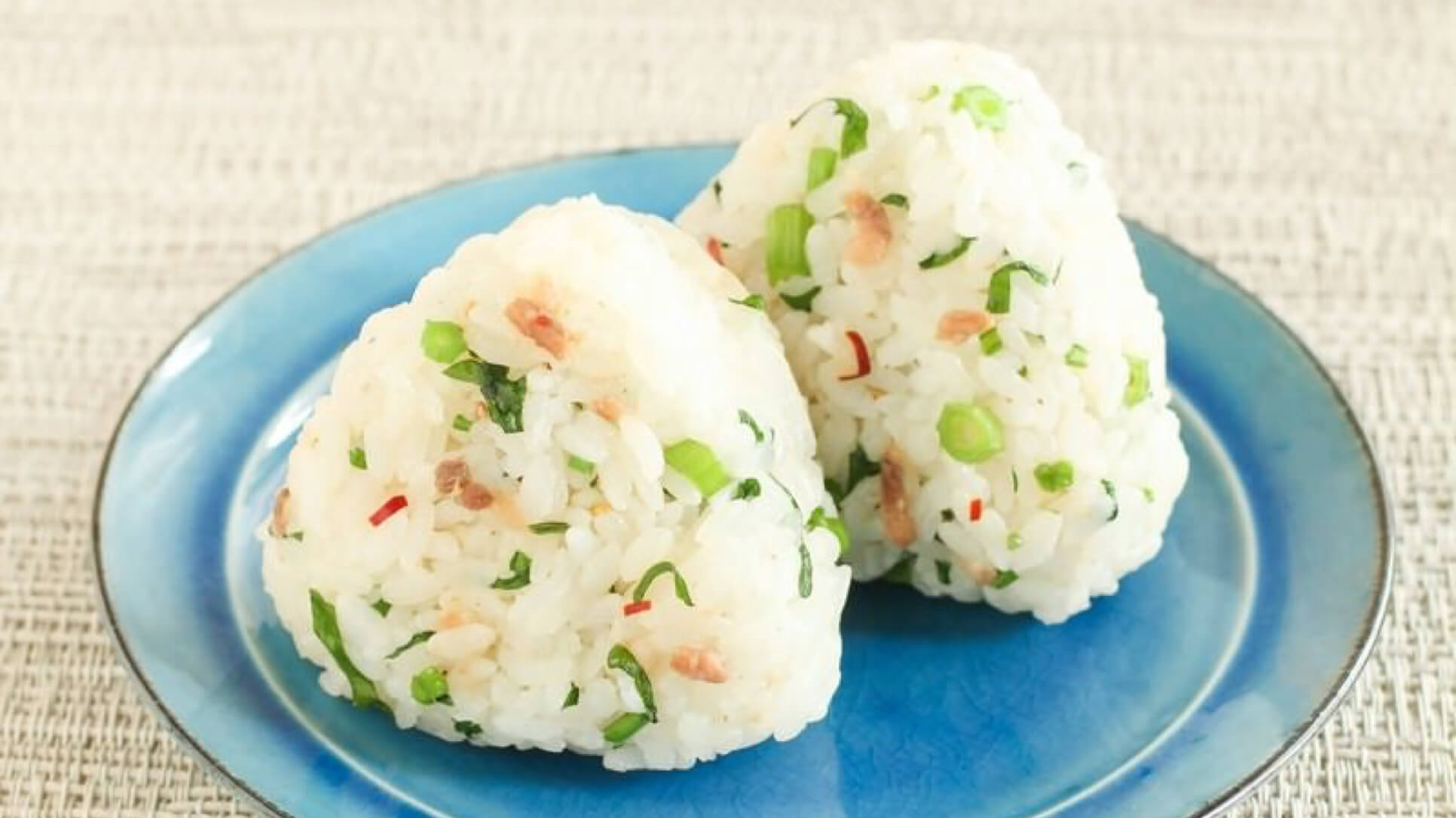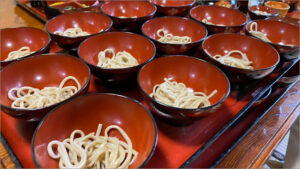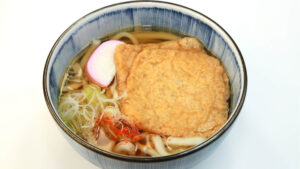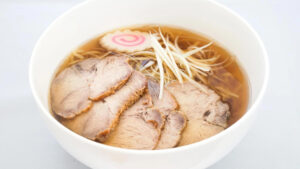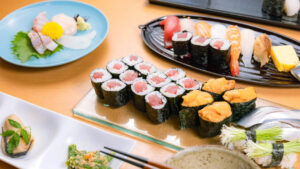Japanese rice is often hailed as the world’s best for its remarkable flavor, aroma, and texture. Yet behind this reputation lies a long history, meticulous quality control, regional variety cultivation, and precise cooking and storage techniques. In this article, we will explore the appeal of Japanese rice from three perspectives—varieties, cooking methods, and storage practices—presented in a way that is easy for foreign visitors to understand. Be sure to check out these tips so you can recreate the authentic taste at home!
Contents
Why Japanese Rice Is Special
History and Cultural Background
The Tradition of Rice Cultivation
Rice cultivation in Japan is believed to have been introduced from the Asian mainland around the 3rd century BCE, during the Yayoi period. Over the subsequent two thousand years, farming techniques evolved to suit local climates and soils. Farmers perfected irrigation channels for paddy fields, selected and transplanted seedlings with care, and created unique landscapes such as terraced rice paddies and earthen reservoirs. These meticulous hands-on practices form the foundation of Japan’s renowned rice quality.
Regional Rice Cultures
Japan’s long, narrow archipelago spans diverse climates, rainfall levels, and soil types, giving rise to a wide variety of distinctive rice strains. In snow-heavy Niigata Prefecture, the melting snow’s pure water nurtures the sweet-tasting Koshihikari. In Akita Prefecture in the Tōhoku region, large temperature swings produce Akita Komachi, known for its clear aroma and firm grains. Each region’s cherished varieties are deeply intertwined with local food culture and seasonal festivals.
Rice and the Japanese Dining Table
On the Japanese dining table, rice often takes center stage. A bowl of freshly steamed white rice enhances the flavors of miso soup, pickles, grilled fish, and other side dishes while providing satisfying fullness. Rice transforms into onigiri (rice balls), sushi, and donburi (rice bowls), and in celebratory settings, red bean rice (sekihan) is indispensable. Sharing rice bowls brings families and friends together, highlighting rice’s role in connecting people.
Quality Standards and Brand Power
What Is the JAS Standard?
The JAS (Japanese Agricultural Standard) is a set of quality criteria defined by Japan’s Ministry of Agriculture, Forestry and Fisheries. For rice, inspection items include grain size, luster, percentage of broken grains, and foreign matter. Only rice meeting or exceeding these criteria can be labeled under grades such as “Specially Cultivated Rice” or “General Hard Rice.” Consumers can use these labels to choose rice with guaranteed safety and quality.
Notable Brand Rice Varieties
- Koshihikari (Niigata, Fukui, etc.): Celebrated for its perfect balance of stickiness and sweetness, it’s the nation’s top-selling brand.
- Akita Komachi (Akita): Grown in a cool climate that produces firm, plump grains with a clean aroma.
- Sasanishiki (Miyagi, etc.): Known for its light texture and resistance to hardening when cooled, making it a favorite in sushi restaurants.
The Positioning of Premium Rice
In recent years, premium rice labeled “Special A,” “Specially Cultivated,” or “Organic JAS” has gained popularity. These varieties not only meet top-tier taste and texture standards but also adhere to strict environmental and sustainability criteria—such as reduced pesticide and chemical fertilizer use and full traceability. Often chosen for gifts and special meals, premium rice can cost 1.5 to 2 times (or more) the price of standard rice.
Comparison with the World
Differences between Domestic and Imported Rice
Domestic rice is cultivated under strict quality control optimized for Japan’s climate and terroir. Imported rice (mainly from the U.S., Thailand, Australia, etc.) focuses on varieties bred for mass production, high yield, and ease of transport. As a result, domestic rice boasts uniform grains with few broken or discolored kernels, whereas imported rice is generally more affordable and widely available.
Texture and Aroma Comparison
Domestic rice is prized for its sticky texture, natural sweetness, and subtle savory aroma when cooked. In particular, Koshihikari varieties excel at balancing chewiness and luster. Imported rice tends to cook up firmer with less stickiness, resulting in a lighter mouthfeel that can work well in pasta or risotto-style dishes. Additionally, domestic rice releases a fresh “meshi-ka” aroma immediately after cooking, while imported rice has a more subdued scent.
Diverse Cooking Methods
In Japan, rice is enjoyed not only as a staple but also in a variety of preparations such as sushi, takikomi gohan (rice cooked with vegetables and seasonings), okayu (rice porridge), and okowa (steamed glutinous rice). The firm grains and stickiness of domestic rice make it ideal for these traditional techniques. Conversely, the firm texture of imported rice lends itself to Western-style rice salads, chilled risottos, and rice-based snacks. By selecting the appropriate rice for each dish, you can elevate your culinary experience.
Representative Japanese Rice Varieties
Koshihikari
Characteristics and Flavor
Koshihikari is celebrated for its exceptional balance of stickiness, sweetness, and luster. When cooked, each grain stands firm, offering a chewy texture and a gentle sweetness that unfolds on the palate.
Main Production Regions
It is cultivated across Japan—in Uonuma, Niigata Prefecture; Fukui; Ibaraki; Hyōgo; and more. Uonuma in Niigata, with its abundant spring meltwater, is considered the pinnacle, and its Koshihikari commands top market prices.
Best Pairings
Enjoy it simply as steamed rice to savor its natural flavor. It also shines in onigiri and rice bowls (donburi), where its sweetness and stickiness enhance the dish. Richly sauced dishes like curry or teriyaki also pair beautifully, elevating the overall dining experience.
Hitomebore
Characteristics and Flavor
Hitomebore features slightly larger grains, a pleasant stickiness, and a firm bite. When cooked, the grains swell plumply, releasing a subtle sweetness and a mild savory note.
Main Production Regions
Primarily grown in southern Miyagi Prefecture, it is also produced in Fukushima and Yamagata. The region’s cool climate and abundant groundwater enhance its taste and aroma.
Best Pairings
Its slightly firm texture makes it ideal for simple salted onigiri. It also complements set meals with miso soup and simmered dishes, as it absorbs just the right amount of broth for a delicious bite.
Akita Komachi
Characteristics and Flavor
Akita Komachi has a moderately low stickiness, allowing you to appreciate each distinct grain. It offers a gentle sweetness and clear savory notes with a light mouthfeel. One of its greatest strengths is that it stays tender and flavorful even when cooled.
Main Production Regions
It is predominantly grown throughout Akita Prefecture, especially in inland areas like Yurihonjō and Daisen, where the cool climate enhances its quality. High-grade Akita Komachi is also produced in parts of southern Iwate and Yamagata Prefectures.
Best Pairings
- Onigiri (rice balls): Its retained flavor when cooled makes it perfect for bentō or picnics.
- Chirashi Sushi: The clean taste harmonizes beautifully with colorful toppings for an elegant presentation.
- Okayu (rice porridge): Its smooth texture and refined sweetness complement the gentle flavors of porridge.
Sasanishiki
Characteristics and Flavor
Sasanishiki is known for its light, non-sticky texture and slightly firm grains. After cooking, it remains separate and doesn’t clump even when cooled. Its subdued aroma and mild flavor enhance other ingredients without overpowering them.
Main Production Regions
It is mainly cultivated along the coastal areas of Miyagi Prefecture, where the fertile soils around Sendai Bay and the mild climate create its signature crisp texture. Small quantities are also grown in parts of Niigata and Fukushima Prefectures.
Best Pairings
- Sushi Rice: The grains separate easily, yielding beautiful, non-sticky shari (vinegared rice).
- Rice Salads: It retains a pleasant firmness even when chilled and blends well with dressings and mix-ins.
- Japanese-Style Risotto: Its light texture pairs perfectly with broths or dashi, creating a delicate, non-heavy risotto.
Tips for Perfectly Cooked Rice
Washing and Soaking
Proper Washing Method
Place the rice in a bowl or rice cooker pot and cover with plenty of water. Gently swirl the rice with your palm to lift off bran and dust—avoid scrubbing too hard to prevent grains from cracking. When the water turns cloudy, slowly drain it, then repeat 2–3 times until the water runs clear.
Recommended Soaking Times
- Summer (room temperature ≥ 20 °C): about 30 minutes
- Spring/Autumn (15–20 °C): about 45 minutes
- Winter (≤ 15 °C): about 60 minutes
Adequate soaking ensures each grain absorbs moisture evenly, resulting in fluffy, well-cooked rice.
Importance of Water Temperature
Use room-temperature or cool water for soaking. Hot water causes the outer layer to absorb moisture too quickly, leading to uneven cooking, while overly cold water prolongs soaking time. Room-temperature water provides the ideal balance.
Choosing the Right Rice Cooker
Rice cookers are standard in Japanese households, but different models yield varying textures and usability. Select one of the following three types based on your needs and budget:
What Is a Pressure IH Rice Cooker?
A Pressure IH (Induction Heating) rice cooker uses high-frequency induction to heat the entire inner pot while applying pressure, ensuring rice is cooked evenly to the core. The sustained high temperature enhances each grain’s firmness, sweetness, and aroma. These models often include multiple cooking settings and timers to suit different texture preferences and dishes. However, they tend to be more expensive.
Features of Microcomputer (Micom) Rice Cookers
Micom rice cookers use an internal microcomputer to control heating patterns. Compared to Pressure IH, their heating range is narrower, yielding slightly less sticky and sweet rice. Their advantage lies in simple operation and affordability, making them ideal for beginners, single-person households, or budget-conscious buyers. Many models include keep-warm and timer functions, and they cook basic white rice satisfactorily.
The Appeal of Pot Cooking
Traditional pot cooking uses earthenware, cast-iron, or stainless-steel pots, allowing you to adjust heat manually. Cooking over gas or on an induction stove transmits heat slowly from the pot’s bottom, creating glossy exteriors and chewy interiors. The process itself, cooked at the table, adds to the experience. Though more labor-intensive, pot cooking brings out the pure aroma and flavor of the rice using simple tools.
Tips for Perfect Rice Texture
Steaming Time
Once cooking finishes, do not open the lid immediately. Let the rice steam for 10–15 minutes using residual heat in the pot. This allows moisture to penetrate each grain evenly, resulting in fluffy rice. Too little steaming causes sogginess or hardness; too much leads to dryness. Use a timer to ensure the ideal steaming duration.
When to Open the Lid
After steaming, wait for the steam inside the pot to settle before fully opening the lid. Opening it abruptly can cause water droplets to fall onto the rice and create a sticky surface. Instead, lift one edge slightly to release steam, then open the lid fully.
Using the Rice Paddle & Keeping Warm
When fluffing the rice with a paddle, imagine lifting from the bottom of the pot and use a slicing motion to turn the grains without crushing them. After fluffing, level the surface and let it rest in “Keep Warm” mode for a few more minutes to distribute moisture evenly and enhance shine and sweetness. Note that prolonged warming can dry out the rice, so aim to consume it within one hour of cooking.
Storage Methods and Preserving Aroma
Where to Store Brown and White Rice
Avoid Direct Sunlight
Rice exposed to UV rays or high temperatures can oxidize its natural oils and lose flavor. Avoid placing rice near windows or under bright lights. Instead, store it in darker spots such as behind curtains or inside kitchen cabinets.
Temperature and Humidity Control
The ideal storage environment is around 15 °C with humidity below 60 %. High temperatures encourage insect infestation, and high humidity promotes mold growth. Instead of storing rice in a hot, humid kitchen, choose cooler, drier areas like a hallway pantry or a designated cool dark storage space.
Using a Cool, Dark Location
During summer or rainy seasons when heat and humidity rise, store both brown and white rice in the refrigerator’s vegetable compartment or another cool, dark spot. To prevent odor transfer, keep rice in an airtight container, and let it return to room temperature before cooking to ensure even steaming.
Long-Term Storage Tips
Using Vacuum Packs
Using a vacuum sealer to remove air from rice containers or bags helps prevent oxidation and insect infestation, preserving flavor for longer. Place rice in commercial vacuum bags and seal tightly—this can extend storage life to six months or more.
Freezing Methods
Not only cooked rice but also raw rice can be frozen. Portion raw rice into freezer bags, flatten them, and freeze for easier handling. When ready to cook, simply put the frozen rice directly into the rice cooker and cook as usual to minimize flavor and texture loss.
Choosing Storage Containers
Airtight plastic or enamel containers are recommended. Look for ones with silicone gaskets and easy-open lids to effectively block moisture and pests. Containers with wide bases and scoop-friendly shapes improve usability.
Pest and Moisture Control Measures
Types of Insect Repellents and How to Use Them
Rice storage containers can use granular chemical repellents (chlorinated hydrocarbons) or natural-ingredient products (e.g., herb- or paulownia-chip–based). Granular repellents are placed sparingly under the container lid so that the vapors circulate through the rice. Natural packs are simply tucked into the top or corner of the rice bag, providing continuous protection with minimal impact on the rice. Always position repellents outside the inner bag or on the inside of the lid—never in direct contact with the rice—and adhere to the replacement dates on the packaging.
Using Silica Gel Desiccants
Silica gel packets absorb moisture to inhibit mold and insect growth. After placing rice in an airtight container, add a few desiccant packets (quantity based on container size), then seal tightly. Since desiccants lose effectiveness as they absorb moisture, replace color-indicating types when they change hue, or swap all packets every 1–2 months for non-indicating types.
Regular Inspection Routine
Once a month, perform the following checks to ensure freshness during long-term storage:
- Open the container and inspect the rice’s color and aroma for any off-odors or discoloration.
- Look between grains for any signs of insects or nesting.
- Examine desiccant and repellent packs for discoloration or expired dates, and replace as needed.
By making these inspections a habit, you’ll maintain fresh flavor and prevent spoilage.
Rice and Side Dish Pairings
Classic Japanese Combinations
A traditional Japanese breakfast often features rice with miso soup, grilled fish, and pickles. The gentle sweetness of steamed rice enhances the savory depth of miso soup and the saltiness of grilled fish, while crisp pickles refresh the palate. Rice also pairs beautifully with sweet-and-savory dishes like chicken teriyaki or pork ginger, as the sauce clings to each grain, delivering rich flavor in every bite.
Western-Style Adaptations
Japanese rice can be used in Western-inspired dishes such as risotto and gratin. For example, stir-fry freshly cooked rice with butter and cheese, season with salt and pepper, and you have “Japanese garlic rice.” You can also transform rice into a salad base or use it in chicken rice. Adding a touch of basil or a drizzle of olive oil creates a delightful fusion of Japanese and Western tastes.
Pairing with Fermented Foods
Fermented foods like natto, kimchi, and nukazuke (rice-bran pickles) elevate the umami of rice. Natto’s stickiness and aroma harmonize with the rice’s sweetness; kimchi’s spice and tang sharpen the rice’s mildness; and the deep flavor and crisp texture of nukazuke provide a perfect contrast. Fermented foods are also highly nutritious, making them a healthy and flavorful pairing.
Onigiri & Bento Styles
Basic Salted Onigiri
Salted onigiri is the simplest way to enjoy rice’s natural flavor. Season freshly cooked rice with a pinch of salt and gently shape it without crushing the grains. If using plastic wrap, sprinkle salt on the rice’s surface, cover with wrap, and form the shape for quick, even results. The contrast of the rice’s sweetness and saltiness is delightful in every bite.
Filling Variations
- Umeboshi (pickled plum): Its tartness and saltiness refresh the palate and provide a perfect salt boost when you’re tired.
- Salmon Flakes: Fluffy bits of grilled salmon mixed into rice create a classic savory onigiri.
- Simmered Kombu: Sweet-and-salty kelp kombu pairs well with rice and makes a great accompaniment to tea.
- Tuna Mayo: Tuna mixed with mayonnaise is a hearty favorite, especially among children.
- Grilled Tarako (cod roe): Placing grilled tarako directly inside offers a pleasantly firm texture and rich flavor.
Keeping Bentos Warm & Fresh
When packing onigiri in a bento, wrap each one in plastic wrap or use onigiri cups to prevent drying. For heat retention, use a thermal lunch jar rather than an insulated cooler bag; its double-lid design keeps rice warm until lunchtime. Fillings prone to spoilage (e.g., mayo-based or raw fish) should be carried in a cooler bag with ice packs and kept chilled until just before eating to prevent bacterial growth.
Bring Japanese Rice Closer to Your Table and Enjoy It More
Japanese rice is special because it is supported by a legacy of rice cultivation traditions, a diverse array of regionally refined varieties, and rigorous quality-control standards. By mastering proper washing, soaking, selecting the right rice cooker, steaming techniques, and paying attention to storage methods, you can preserve its flavor and aroma for longer. Start applying these tips today to fully savor the fluffy sweetness of Japanese rice at every meal.
